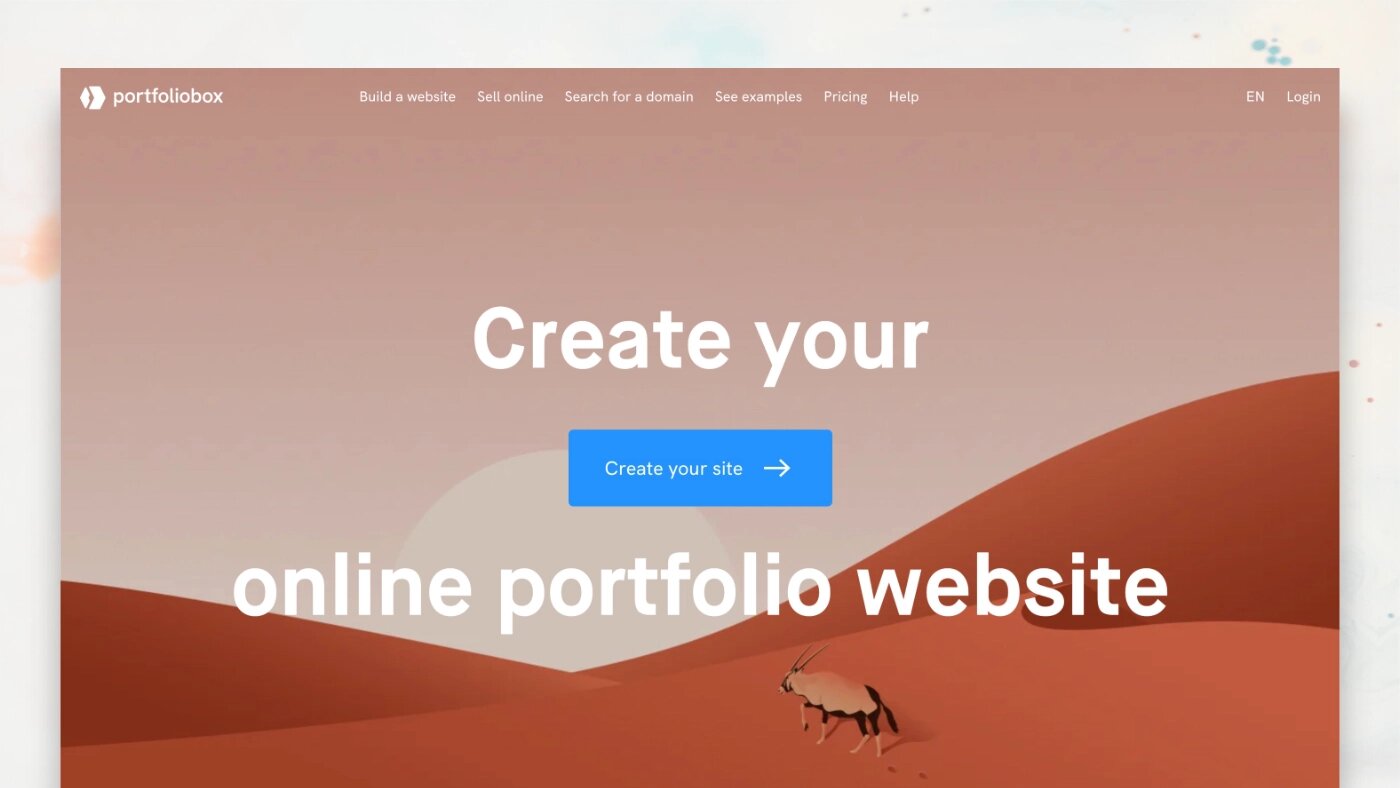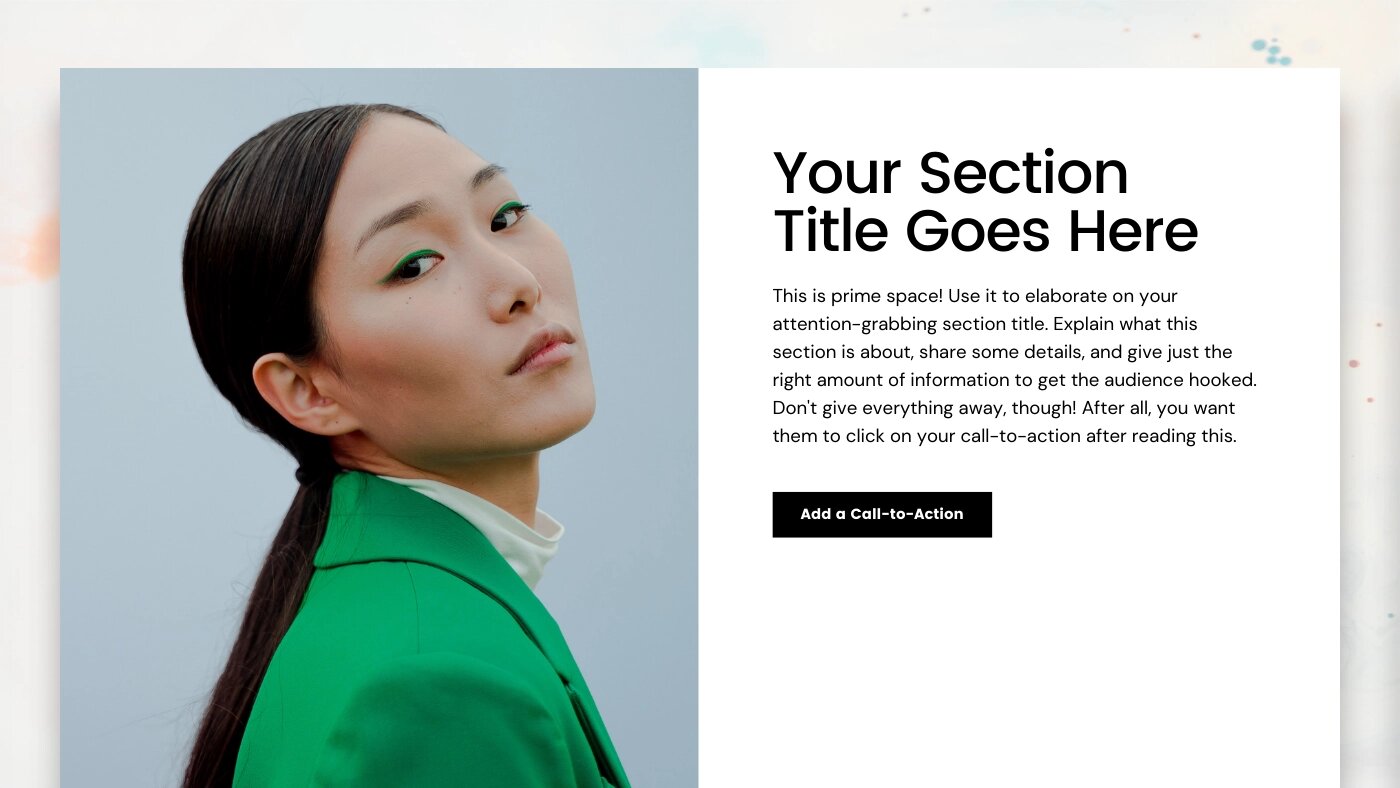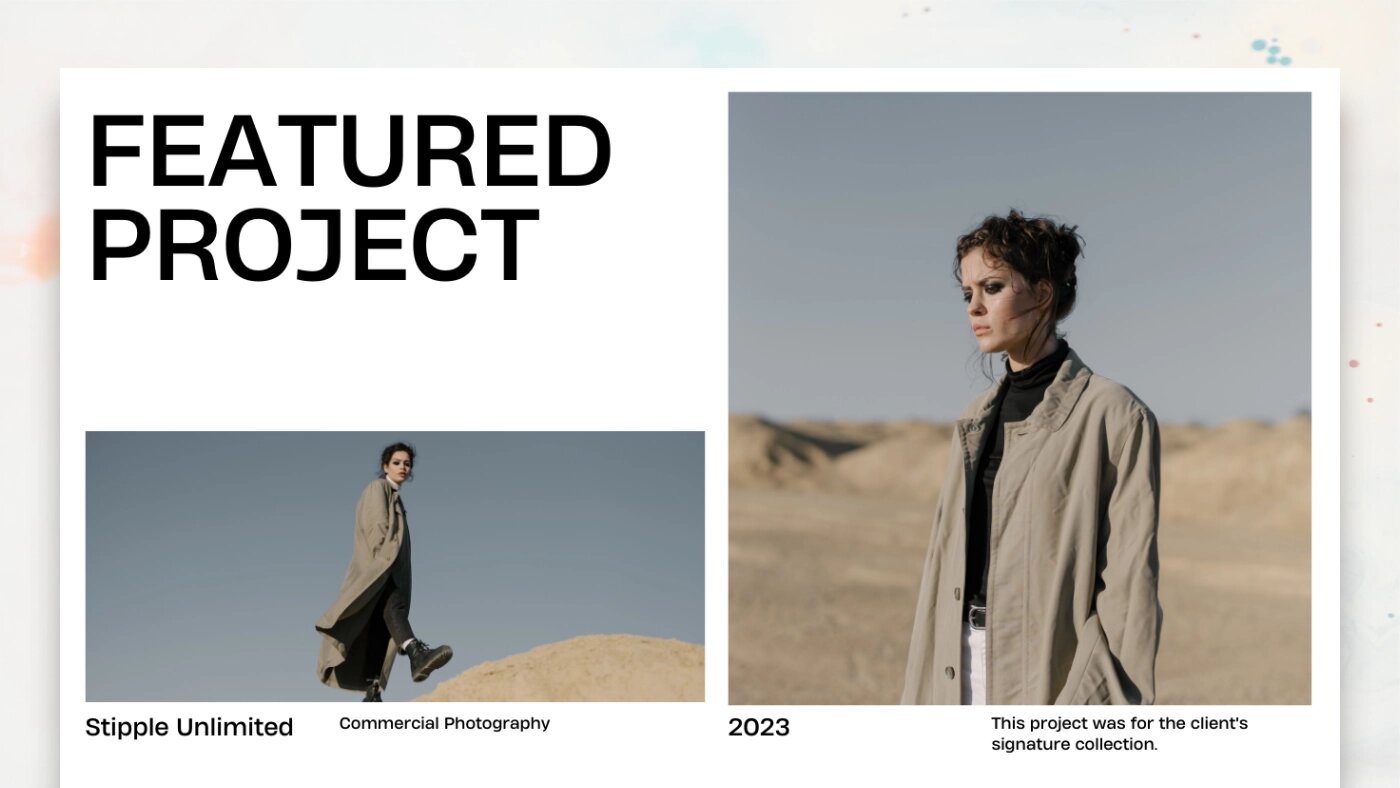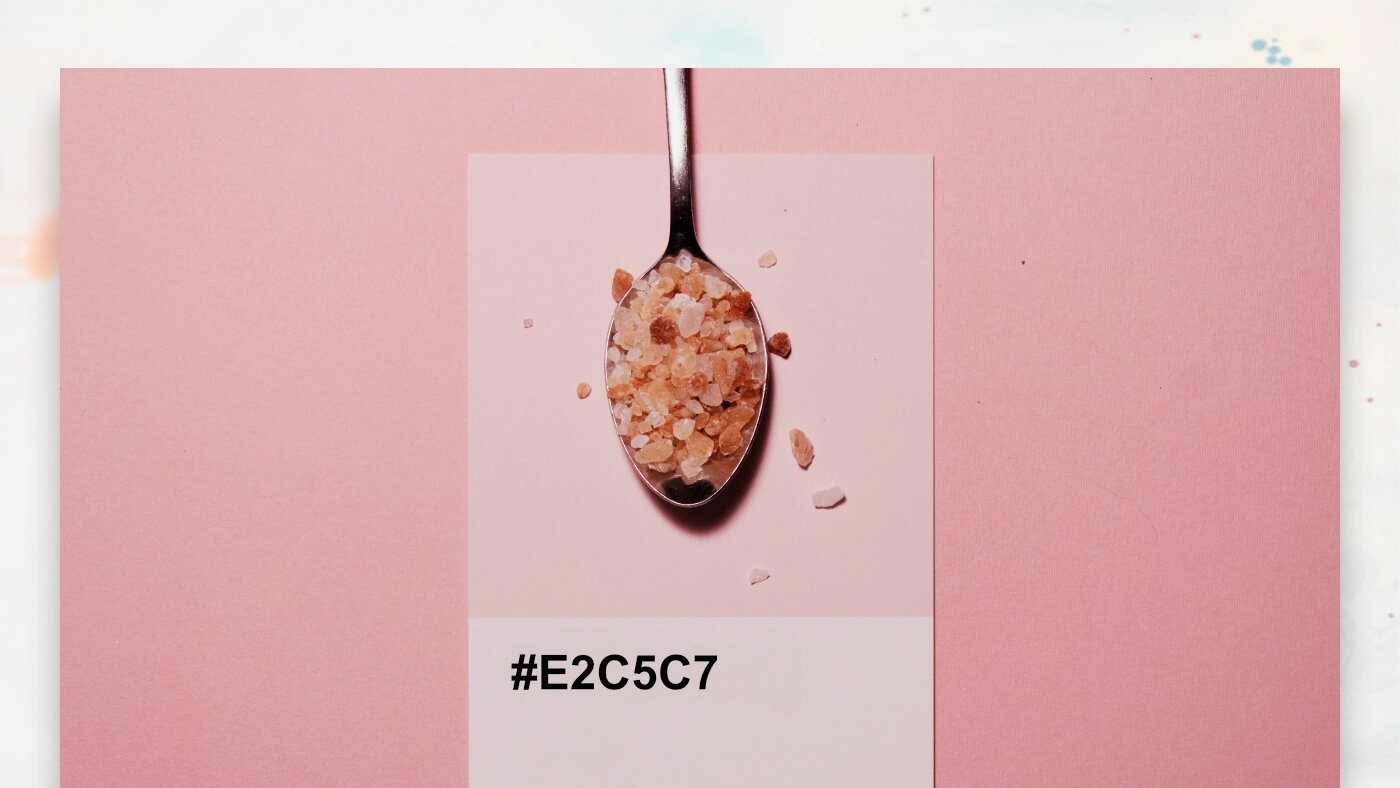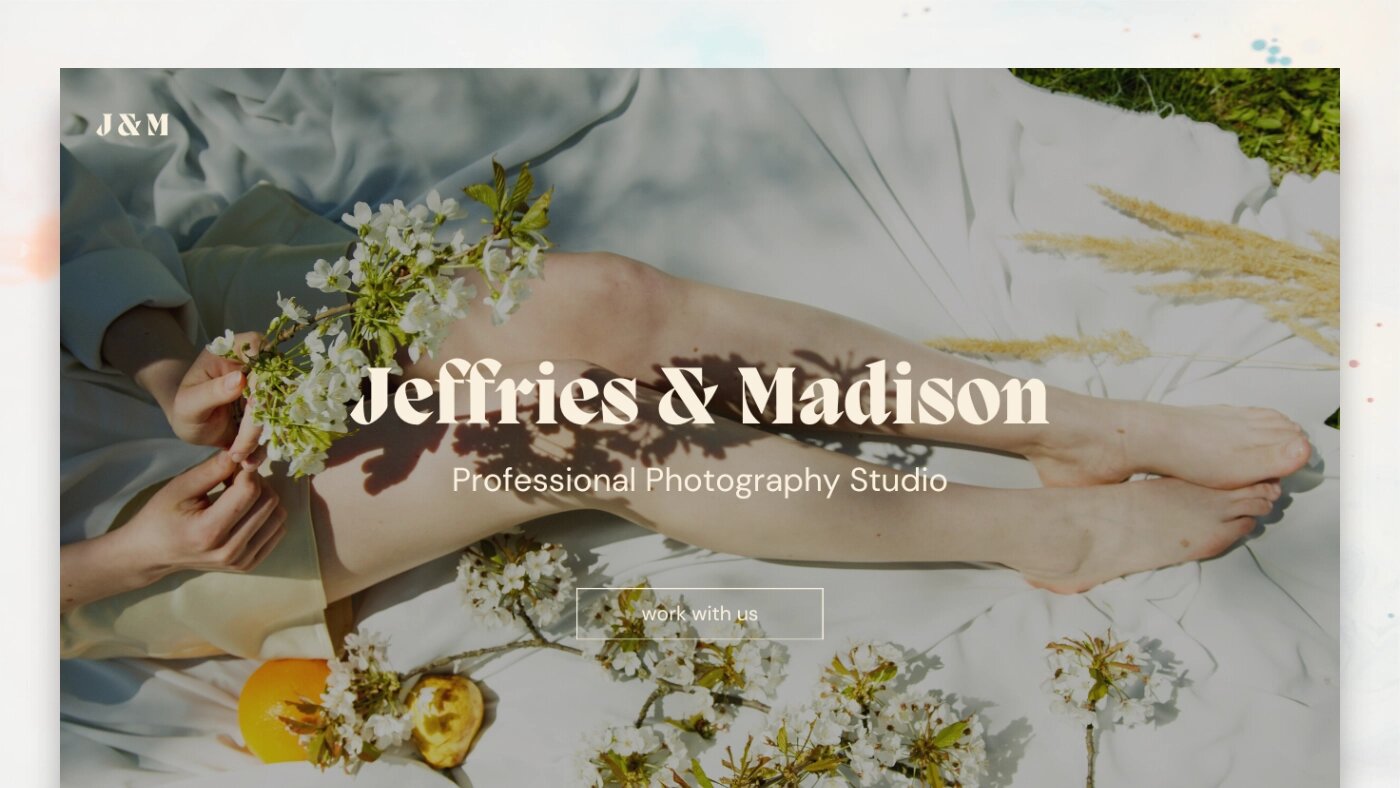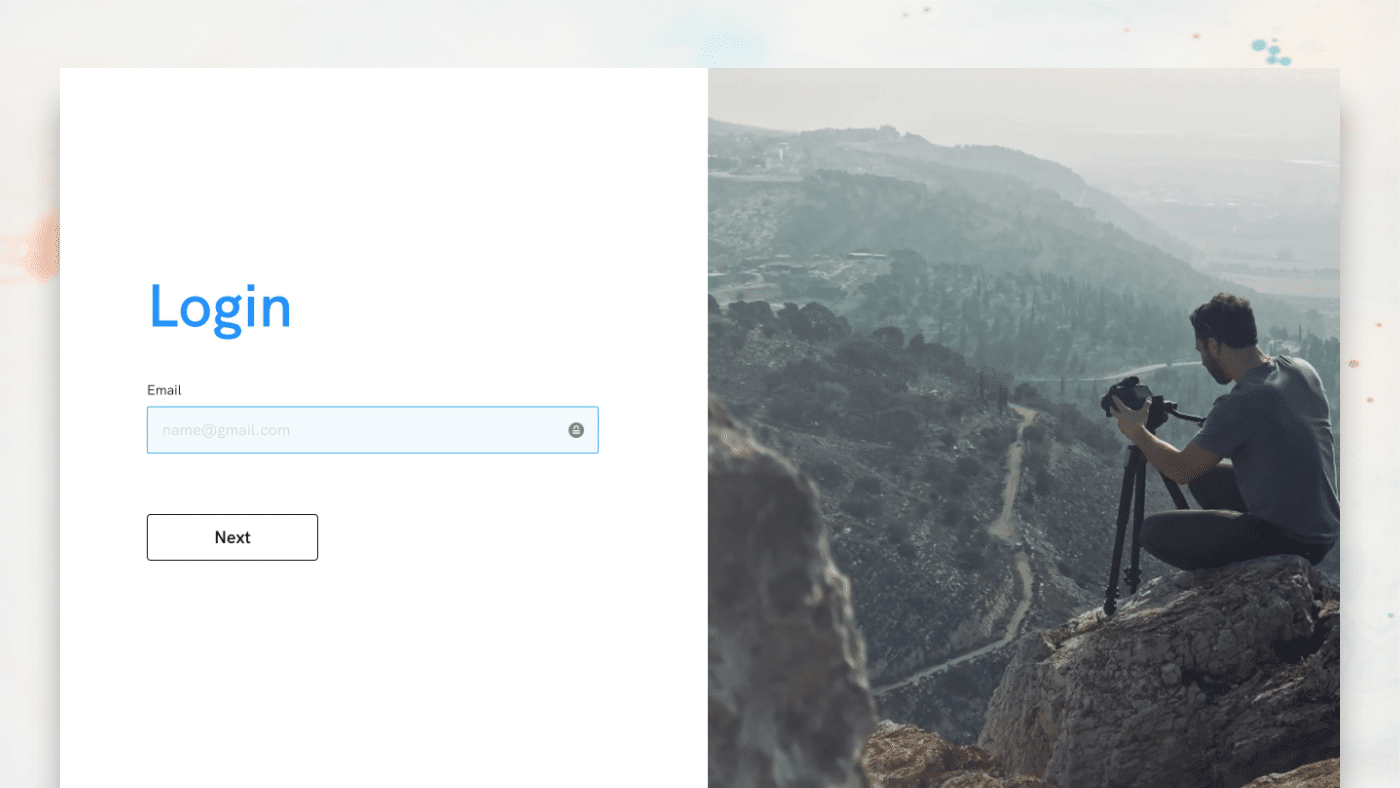Table of Contents
Portfoliobox offers different page types with many page templates. Note that you are never constrained to a template. Use our templates as such or edit them the way you want: remove the default elements in the template, edit them and add new ones. Below is a summary of the templates we offer.
Project templates
Showcase your creative work with specialized templates for photography, design, art, video, 3D, music, gaming, and fashion projects.
- Photography
- Design & Concept
- Art & Illustration
- Videography
- 3D
- Music & Sound
- Streaming & Gaming
- Fashion & Beauty
Other templates
Enhance your site's functionality and presentation with diverse templates for text content, contact information, landing pages, services, team profiles, CVs, calls to action, galleries, blogs, testimonials, events, FAQs, logos, submenus, and embedded widgets.
- Text: Craft compelling narratives or information sections with templates optimised for text content, ensuring readability and engagement. Best for About Me, Privacy Policy, General Terms. Certain templates also include an image.
- Contact: Connect with your audience using templates designed for contact information, forms, and maps, making it easy for visitors to reach out.
- Cover: Make a strong first impression with cover page templates highlighting your brand, project, or personal identity through captivating visuals and concise text.
- Link Page: Centralise your online presence with link page templates, a page type that displays links to other pages. See an example on our demo site.
- Services: Showcase your offerings with service templates designed to detail your professional services, pricing, and unique selling points.
- Team: Introduce your team with templates highlighting the people behind your brand, showcasing their roles, expertise, and personal insights.
- Cv: Present your professional journey with CV templates, offering a structured format to display your experience, skills, and achievements.
- Call to Action: Drive user engagement and conversions with eye-catching templates designed to highlight calls to action on your site.
- Gallery: Display your visual content in stunning galleries with templates designed for artists, photographers, and creators to showcase their work. Gallery templates can be thumbnail, horizontal, vertical, slideshow and fullscreen.
- Blog Page: Engage your audience with blog page templates, ideal for publishing news, insights, and stories, keeping your site content fresh and relevant.
- Testimonials: Build trust and credibility with testimonial templates, sharing customer experiences and endorsements in a compelling format.
- Event List: Promote your events with templates that list upcoming occasions, providing details like dates, locations, and descriptions to keep your audience informed.
- FAQ: Address common questions with FAQ templates, offering a clear and organized way for visitors to find answers and information.
- Logos: A Logos page allows you to display logos on your website. It can be a way to display the logos of your clients or logos you created.
- Submenu: Organize your site's content with intuitive submenu templates that enhance navigation and user experience.
- Embed & Widget: Enrich your pages with external tools, social feeds, or interactive features using versatile embed and widget templates.
E-Commerce Templates
Launch your online store or booking service with templates designed to sell products and services and schedule appointments.
- Store Page: Launch your online storefront with ease using templates that are designed for showcasing and selling products.
- Bookable Services & Events: Seamlessly integrate service bookings or event registrations into your site with templates tailored for scheduling and managing events.
- Bookable Appointments: Simplify appointment booking with user-friendly templates designed for clients to easily schedule meetings, consultations, or services.
Start Blank
- Create a blank page: Embrace total creativity by starting with a blank canvas, allowing for fully customized page designs.
Reuse a Page
- Use an Existing Page as Template: Streamline your site creation by repurposing existing pages as templates for new content.
Discontinued page types
When we launched version 4 of Portfoliobox, some pages were removed.
- Poetry page: The poetry page in version 3 is a text page on which the menu is hidden. This can be created in version 4 with a regular text page. The menu can then be hidden from the page settings.
- Guestbook page: Guestbook is a page with a contact form for your visitors to leave you a message that will be visible to everyone. This page was sometimes misused by visitors. We have decided not to keep this page on version 4.
- Instagram page: An Instagram page is a page displaying your Instagram feed. This used to be a simple and efficient integration using Instagram API. Meta's new policies and requirements for displaying the Instagram feed on a website are all but simple and efficient. We have decided not to keep this page on version 4.
- Video page: A video page on version 3 is a page dedicated to a video. On version 4, you can embed videos on any page by adding a media element to the page.
